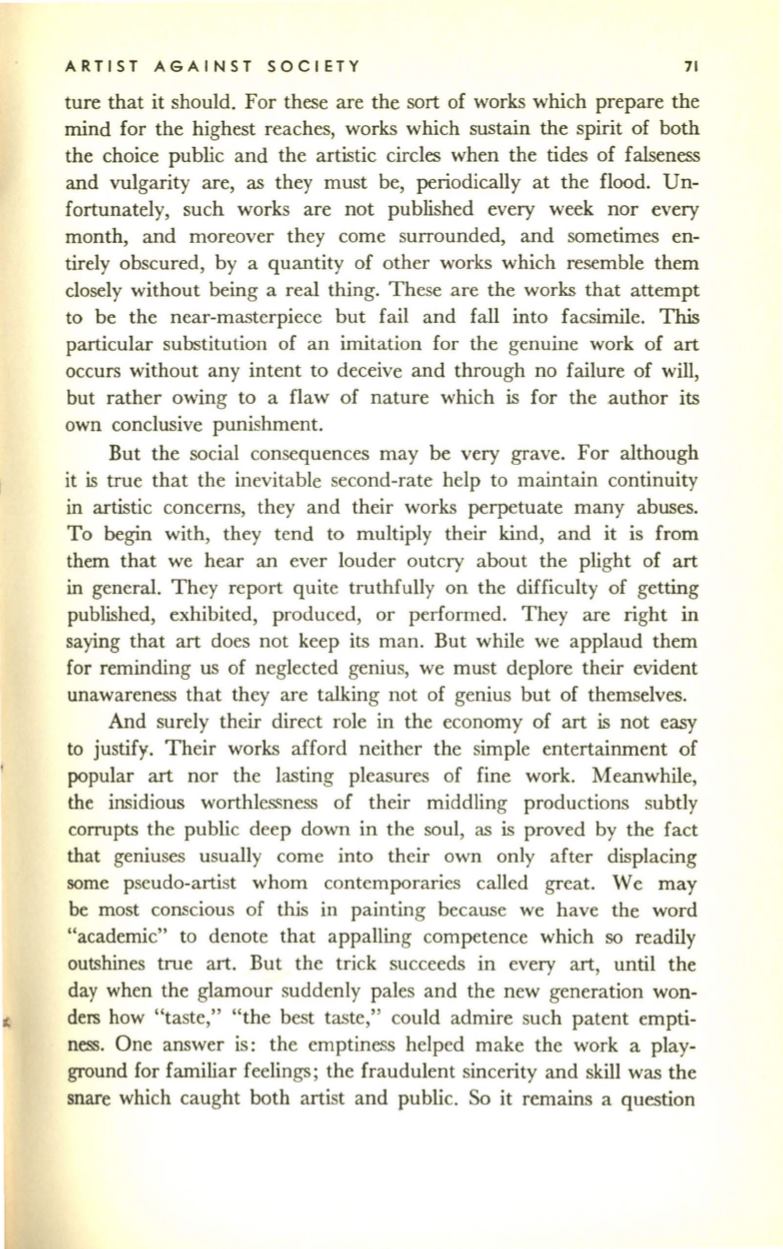
ARTIST AGAINST SOCIETY
71
ture that it should. For these are the sort of works which prepare the
mind for the highest reaches, works which sustain the spirit of both
the choice public and the artistic circles when the tides of falseness
and vulgarity are, as they must be, periodically at the flood. Un–
fortunately, such works are not published every week nor every
month, and moreover they come surrounded, and sometimes en–
tirely obscured, by a quantity of other works which resemble them
closely without being a real thing. These ,are the works that attempt
to be the near-masterpiece but fail and fall into facsimile. This
particular substitution of an imitation for the genuine work of art
occurs without any intent to deceive and through no failure of will,
but rather owing to a flaw of nature which is for the author its
own conclusive punishment.
But the social consequences may be very grave. For although
it is true that the inevitable second-rate help to maintain continuity
in artistic concerns, they and their works perpetuate many abuses.
To begin with, they tend to multiply their kind, and it is from
them that we hear an ever louder outcry about the plight of art
in general. They report quite truthfully on the difficulty of getting
published, exhibited, produced, or performed. They are right in
saying that art does not keep its man. But while we applaud them
for reminding us of neglected genius, we must deplore their evident
unawareness that they are talking not of genius but of themselves.
And surely their direct role in the economy of art is not easy
to justify. Their works afford neither the simple entertainment of
popular
art
nor the lasting pleasures of fine work. Meanwhile,
the insidious worthlessness of their middling productions subtly
corrupts the public deep down in the soul, as is proved by the fact
that geniuses usually come into their own only after displacing
some pseudo-artist whom contemporaries called great. We may
be most conscious of this in painting because we have the word
"academic" to denote that appalling competence which so readily
outshines true
art.
But the trick succeeds in every
art,
until the
clay when the glamour suddenly pales and the new generation won-
..
clers how "taste," "the best taste," could admire such patent empti–
ness. One answer is: the emptiness helped make the work a play–
ground for familiar feelings; the fraudulent sincerity and skill was the
snare which caught both artist and public. So it remains a question


